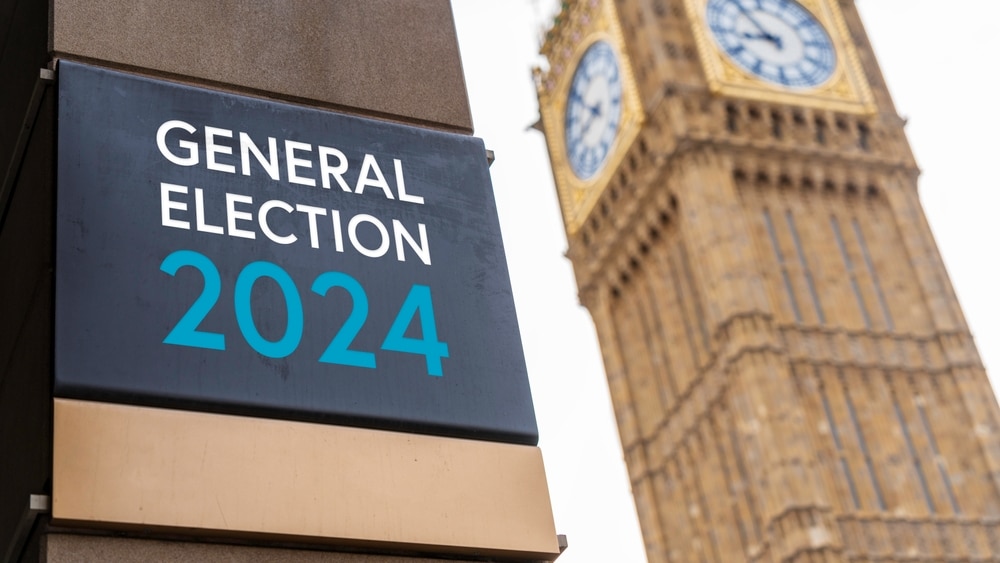As the UK prepares for the next election, we’re looking at how the parties’ policies compare when it comes to the green agenda.
As the race to combat climate change intensifies, the UK’s political landscape is a battleground of green promises and sustainability targets. And with the aim to ‘build back greener’ and reach net zero by 2050, it’s vital that all government parties have a clear, competent stance on climate change and how they would steer the nation towards this critical goal.
Now – with the general election looming on July 4th – we’re looking at each major political party’s recent manifestos and what their positions are on the green agenda.
How do the UK government parties compare in their environmental manifesto pledges?
Whoever wins the General Election has a responsibility to help move the country towards a more environmentally conscious, sustainably sound future. Here we summarise the major parties’ stance on sustainability, how they compare and who is the most focused on building an eco-focused country.
Conservative Party
Commitments:
- Net zero by 2050: The Conservative Party has committed to achieving net zero carbon emissions by 2050.
- Green industrial revolution: Their manifesto also places an emphasis on green jobs, investing in renewable energy and green technologies.
- Biodiversity and conservation: They have set out plans to protect 30% of the UK’s land by 2030.
- Transport: There is also a focus on electric vehicle (EV) infrastructure and banning the sale of new petrol and diesel cars by 2030.
- Nuclear energy: There will be a continued investment in nuclear energy as a clean energy source.
Approach: The Conservative Party‘s approach is a blend of environmental commitments with a strong focus on economic growth and technological advancements. There is significant emphasis on market-driven solutions and innovation.
Labour Party
Commitments:
- Net zero by 2030: Labour – on the other hand – aims to achieve net zero carbon emissions by 2030, a far more ambitious target than the Conservatives.
- Green new deal: They have outlined comprehensive plans to invest in renewable energy, public transport and green jobs.
- Social justice: There is an emphasis on ensuring that the transition to a green economy benefits all, with measures to support workers transitioning from high-carbon industries.
- Energy nationalisation: They also have plans to bring energy networks into public ownership to ensure a rapid transition to renewable energy.
Approach: Labour‘s manifesto highlights a more aggressive stance on climate action compared to the Conservatives, with a strong focus on social justice, public ownership and community-led initiatives.
Liberal Democrats
Commitments:
- Net zero by 2045: The Liberal Democrats aim for net zero carbon emissions by 2045 – a stronger stance than the Conservatives but less aggressive than Labour.
- Green investment plan: Their manifesto includes proposals for a large-scale green investment programme to promote renewable energy, energy efficiency, and green jobs.
- Nature and biodiversity: It also features policies to protect and enhance natural habitats, aiming for 80% renewable electricity by 2030.
- Carbon pricing: It introduces a carbon tax to incentivise reductions in greenhouse gas emissions.
Approach: The Liberal Democrats‘ approach is characterised by ambitious environmental targets, strong support for renewable energy and using market mechanisms like carbon pricing to drive change.
Green Party
Commitments:
- Net Zero by 2030: Similar to Labour, the Green Party aims for net zero by 2030.
- Radical green new deal: It features comprehensive plans for an overhaul of the economy to focus on sustainability, including massive investment in renewable energy and public transport.
- Biodiversity and conservation: There is a strong emphasis on protecting natural habitats and reversing biodiversity loss.
- Climate justice: Their manifesto includes policies to ensure a fair transition for all (particularly marginalised communities) with a focus on social equity.
Approach: The Green Party‘s manifesto is – unsurprisingly – the most radical in terms of environmental policies, prioritising ecological sustainability and social justice above all else, with detailed plans for systemic change.
Scottish National Party (SNP)
Commitments:
- Net zero by 2045: Scotland, under the SNP, aims for net zero by 2045.
- Just transition: It has features that will ensure a fair transition for workers from high-carbon industries.
- Renewable energy: There is a strong focus on offshore wind, tidal, and other renewable energy sources.
- Circular economy: In addition, measures to promote recycling, reduce waste and develop a circular economy.
Approach: The SNP emphasises a balanced approach with ambitious but achievable targets, focusing on leveraging Scotland’s renewable energy potential and ensuring a just transition for workers.
Reform Party
Commitments:
- No more net zero: Reform plans to scrap net zero entirely, which they say would save £30bn over 25 years.
- Focus on cutting costs: Reform aims to improve energy efficiency without heavy regulations on businesses, invest in innovative technologies and also supports nuclear energy.
- Energy independence: Their manifesto supports policies that enhance the UK’s energy independence such as a mix of nuclear and natural gas sources.
- Less renewables: They are critical of relying on renewables and transitioning away from fossil fuels.
Approach:
Reform – by far – has the least ambitious and most conservative approach to the green agenda. They prioritise economic stability and caution against what they see as overly aggressive environmental policies.
Which UK party is the greenest?
Looking at each party’s manifesto with regards net zero and the green agenda, there are two standouts when it comes to green credentials. The Green Party has the most comprehensive plans for sustainability, aiming for net zero by 2030 with a strong emphasis on climate justice and systemic change. However, Labour also ranks highly, with their own aims for net zero by 2030 and a big focus on social justice and public ownership.
The Liberal Democrats and SNP have a more moderate sustainable stance – both have ambitious goals but are more balanced, with a market-oriented approach and arguably more achievable targets.
At the bottom of the pack sit the Conservative Party and Reform. While the Conservatives are committed to net zero by 2050, their approach is considerably more market-driven and passive in comparison to the other parties. Reform’s policies are entirely market-driven, and would actually move the country backwards in terms of our mission to create a more sustainable society.
Whichever party is successful at the next general election, only time will tell who stays true to their policy promises. We hope that – whoever it is – the green agenda will stay at the forefront of future decisions, plans and changes.




















